Temporarily Epigenetic Repression in Bergmann Glia Regulates the Migration of Granule Cells
- PMID: 34026436
- PMCID: PMC8132163
- DOI: 10.1002/advs.202003164
Temporarily Epigenetic Repression in Bergmann Glia Regulates the Migration of Granule Cells
Abstract
Forming tight interaction with both Purkinje and granule cells (GCs), Bergmann glia (BG) are essential for cerebellar morphogenesis and neuronal homeostasis. However, how BG act in this process is unclear without comprehensive transcriptome landscape of BG. Here, high temporal-resolution investigation of transcriptomes with FACS-sorted BG revealed the dynamic expression of genes within given functions and pathways enabled BG to assist neural migration and construct neuron-glia network. It is found that the peak time of GCs migration (P7-10) strikingly coincides with the downregulation of extracellular matrix (ECM) related genes, and the disruption of which by Setdb1 ablation at P7-10 in BG leads to significant migration defect of GCs emphasizing the criticality of Nfix-Setdb1 mediated H3K9me3 repressive complex for the precise regulation of GCs migration in vivo. Thus, BG's transcriptomic landscapes offer an insight into the mechanism by which BG are in depth integrated in cerebellar neural network.
Keywords: BG development; Bergmann glia; ECM; GC migration; H3K9me3; Nfix; Setdb1.
© 2021 The Authors. Advanced Science published by Wiley‐VCH GmbH.
Conflict of interest statement
The authors declare no conflict of interest.
Figures
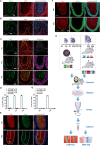
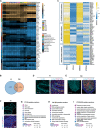
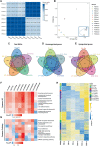
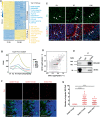
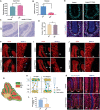
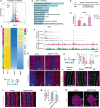
Similar articles
-
Cell-type-specific expression of NFIX in the developing and adult cerebellum.Brain Struct Funct. 2017 Jul;222(5):2251-2270. doi: 10.1007/s00429-016-1340-8. Epub 2016 Nov 23. Brain Struct Funct. 2017. PMID: 27878595
-
Transcriptional Regulator ZEB2 Is Essential for Bergmann Glia Development.J Neurosci. 2018 Feb 7;38(6):1575-1587. doi: 10.1523/JNEUROSCI.2674-17.2018. Epub 2018 Jan 11. J Neurosci. 2018. PMID: 29326173 Free PMC article.
-
Shp2-dependent ERK signaling is essential for induction of Bergmann glia and foliation of the cerebellum.J Neurosci. 2014 Jan 15;34(3):922-31. doi: 10.1523/JNEUROSCI.3476-13.2014. J Neurosci. 2014. PMID: 24431450 Free PMC article.
-
Bergmann glia function in granule cell migration during cerebellum development.Mol Neurobiol. 2013 Apr;47(2):833-44. doi: 10.1007/s12035-013-8405-y. Epub 2013 Jan 19. Mol Neurobiol. 2013. PMID: 23329344 Review.
-
Cytodifferentiation of Bergmann glia and its relationship with Purkinje cells.Anat Sci Int. 2002 Jun;77(2):94-108. doi: 10.1046/j.0022-7722.2002.00021.x. Anat Sci Int. 2002. PMID: 12418089 Review.
References
Publication types
MeSH terms
Substances
LinkOut - more resources
Full Text Sources
Other Literature Sources
Molecular Biology Databases
Miscellaneous
